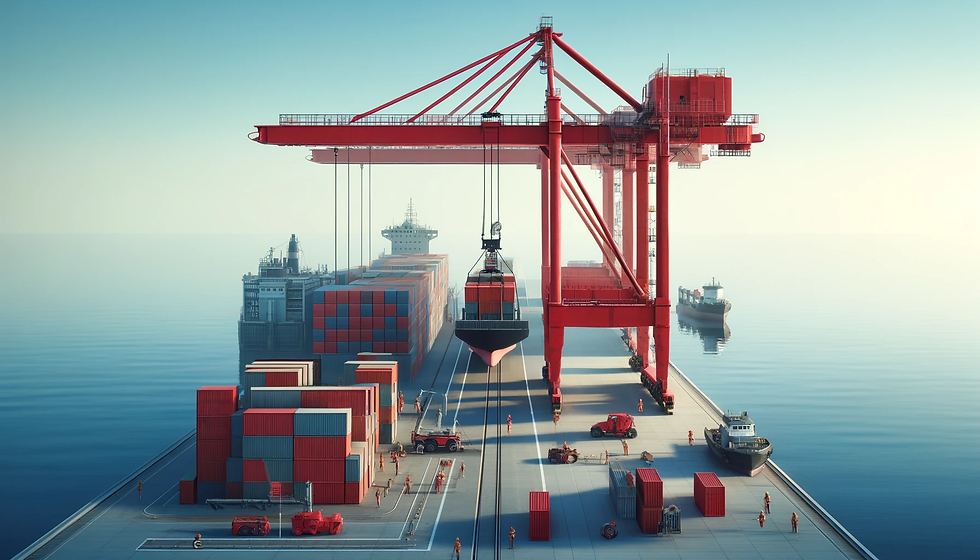In the fast-paced world of modern logistics, efficiency isn't just a goal—it's a necessity. As industries and ports evolve, the demand for more sophisticated and efficient material handling solutions has led to significant advancements in crane technology. Portal cranes have emerged as pivotal assets, redefining efficiency parameters in cargo handling and logistics operations. This blog explores the vital role of portal cranes in modern logistics, highlighting how they contribute to streamlined operations and the impact of their innovative features on the industry.
The Backbone of Modern Ports and Terminals
Portal cranes, known for their towering presence at ports and terminals, are engineered for heavy-duty lifting and precise movements. Their design, featuring a portal structure that allows vehicles and cargo to pass beneath, makes them uniquely suited for quickly and safely handling cargo containers and bulk materials.
Speed and Versatility
One of the key factors contributing to the efficiency of portal cranes is their versatility. Capable of handling a wide range of cargo types—from containers to bulk commodities—they play a crucial role in minimizing downtime and ensuring a smooth flow of goods. Moreover, their speed in loading and unloading operations significantly reduces vessel turnaround time, a critical measure of port efficiency.
Technological Integration
Integrating advanced technology has propelled portal cranes to the forefront of logistics efficiency. Features such as automation, real-time tracking, and remote monitoring systems have enabled precise control and monitoring of operations, minimizing human error and enhancing safety. These technological advancements speed up logistics processes and ensure accuracy in cargo handling, further boosting efficiency.
Enhancing Safety and Sustainability
Safety and sustainability are at the heart of operational efficiency in modern logistics. Portal cranes, through innovative design and operation, contribute significantly to these aspects.
Safety Features
Portal cranes are designed for stability and durability with high-strength materials and advanced engineering. Safety mechanisms, including overload protection and emergency stop systems, ensure operators' well-being and cargo protection. These features and rigorous safety protocols make portal cranes a reliable choice for heavy-duty operations.
Sustainability Practices
Portal cranes have adapted to incorporate eco-friendly technologies as the logistics industry moves towards greener operations. Electric-powered cranes, for example, have become more prevalent, reducing greenhouse gas emissions and lowering the carbon footprint of port operations. Furthermore, the efficiency of portal cranes in handling cargo reduces idle times for ships at ports, contributing to lower fuel consumption and emissions.
The Future of Logistics: Smart Cranes and Beyond
The future of portal cranes in logistics is closely tied to the advancement of intelligent technologies. Integrating IoT (Internet of Things) devices, artificial intelligence (AI), and machine learning into crane operations is set to redefine efficiency in logistics further.
Smart Operation Systems
The next generation of portal cranes will feature even more sophisticated operation systems capable of autonomous decision-making based on real-time data analytics. These smart cranes will optimize loading and unloading sequences, adjust operations based on weather conditions, and predict maintenance needs, reducing downtime and increasing overall efficiency.
Collaboration with Autonomous Vehicles
Portal cranes' role will expand as they begin to interact more seamlessly with autonomous vehicles and drones in the logistics chain. This collaboration will enable synchronized operations across different stages of cargo handling, from storage to final delivery, ensuring a highly efficient logistics ecosystem.
Conclusion
Portal cranes are more than just towering structures at ports and logistics centers; they are integral to modern logistics, driving efficiency, safety, and sustainability. As technology advances, portal cranes' role in shaping the future of logistics and supply chain management will undoubtedly grow. Through continuous innovation and integration with emerging technologies, portal cranes will remain at the forefront of meeting the ever-increasing demands of global trade and logistics operations.





Commentaires